Words and Photos from Kyle S. & Logan H.
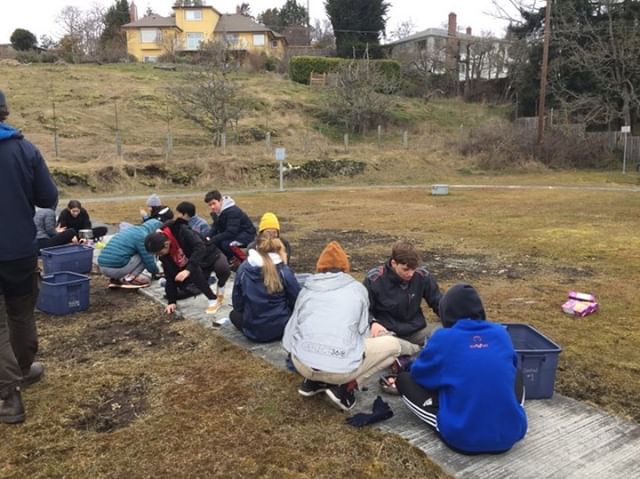
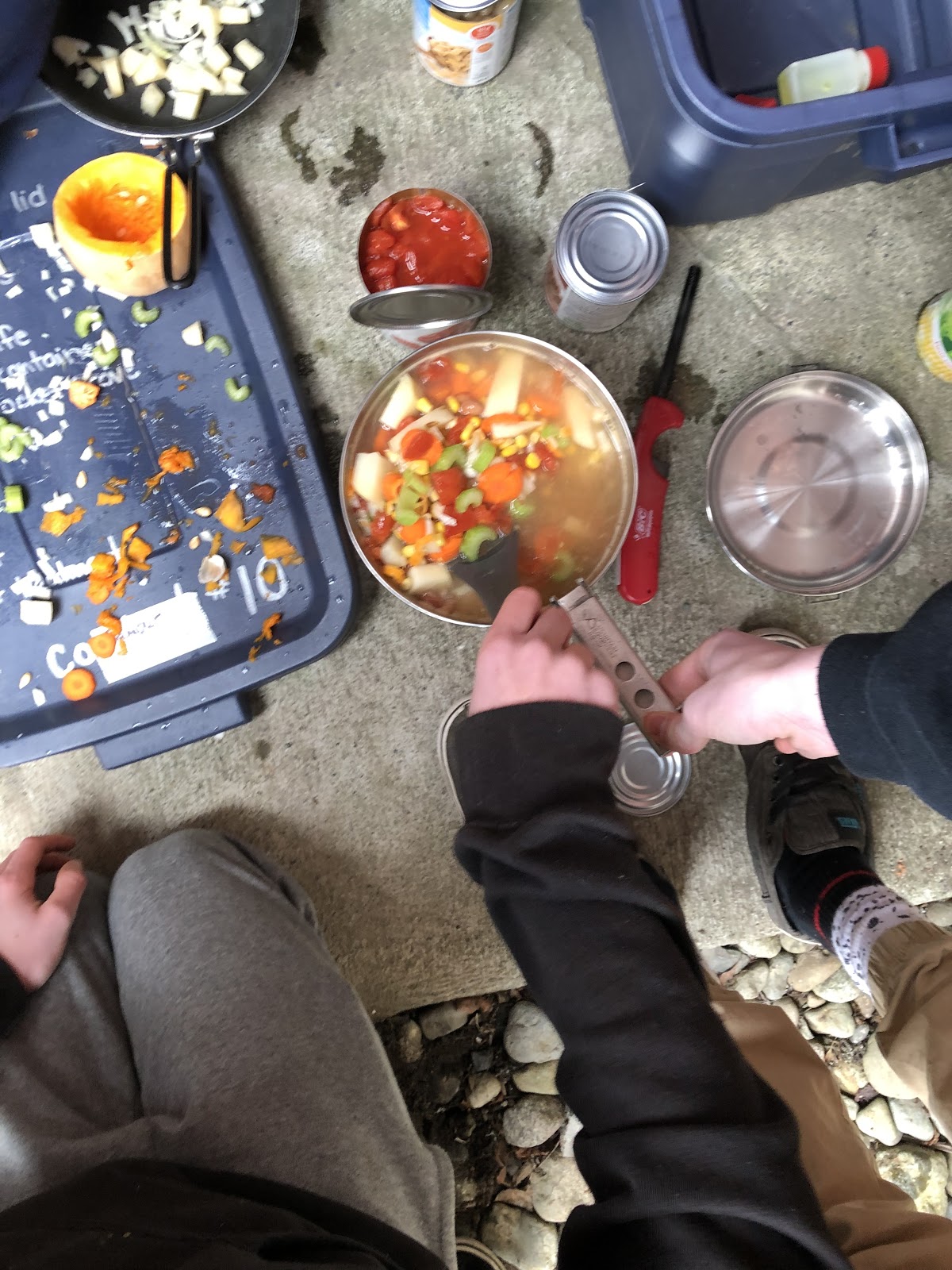
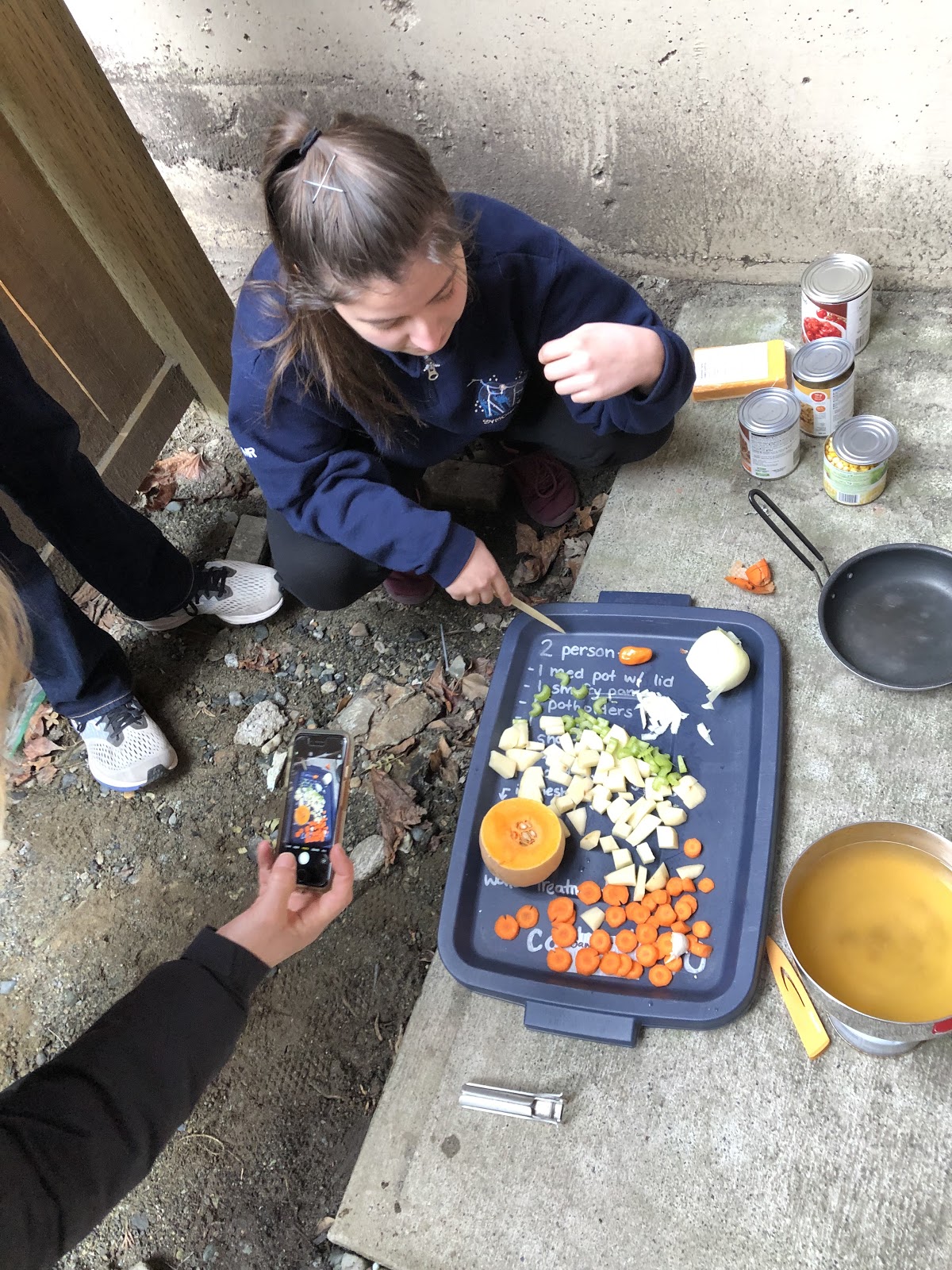
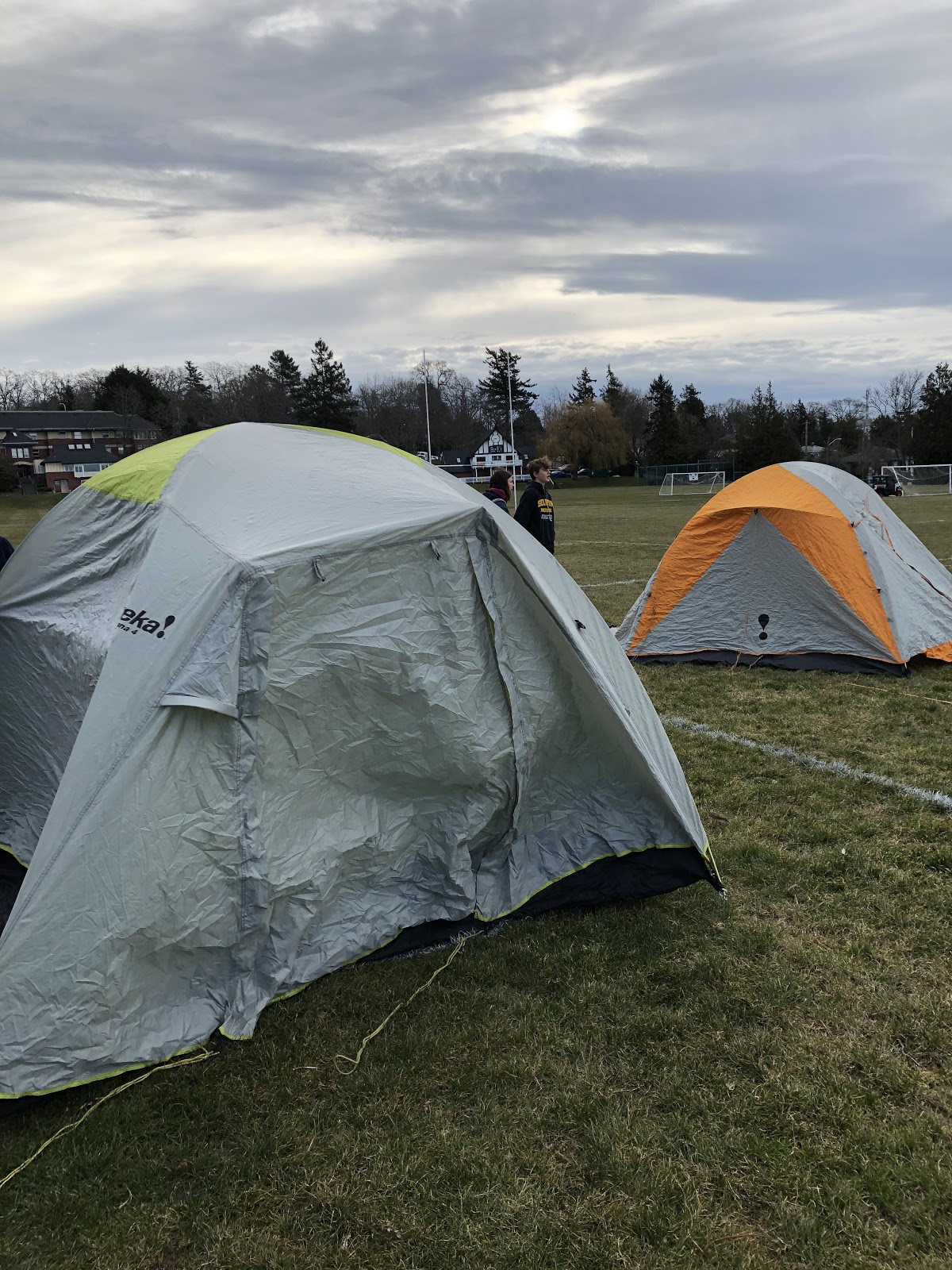
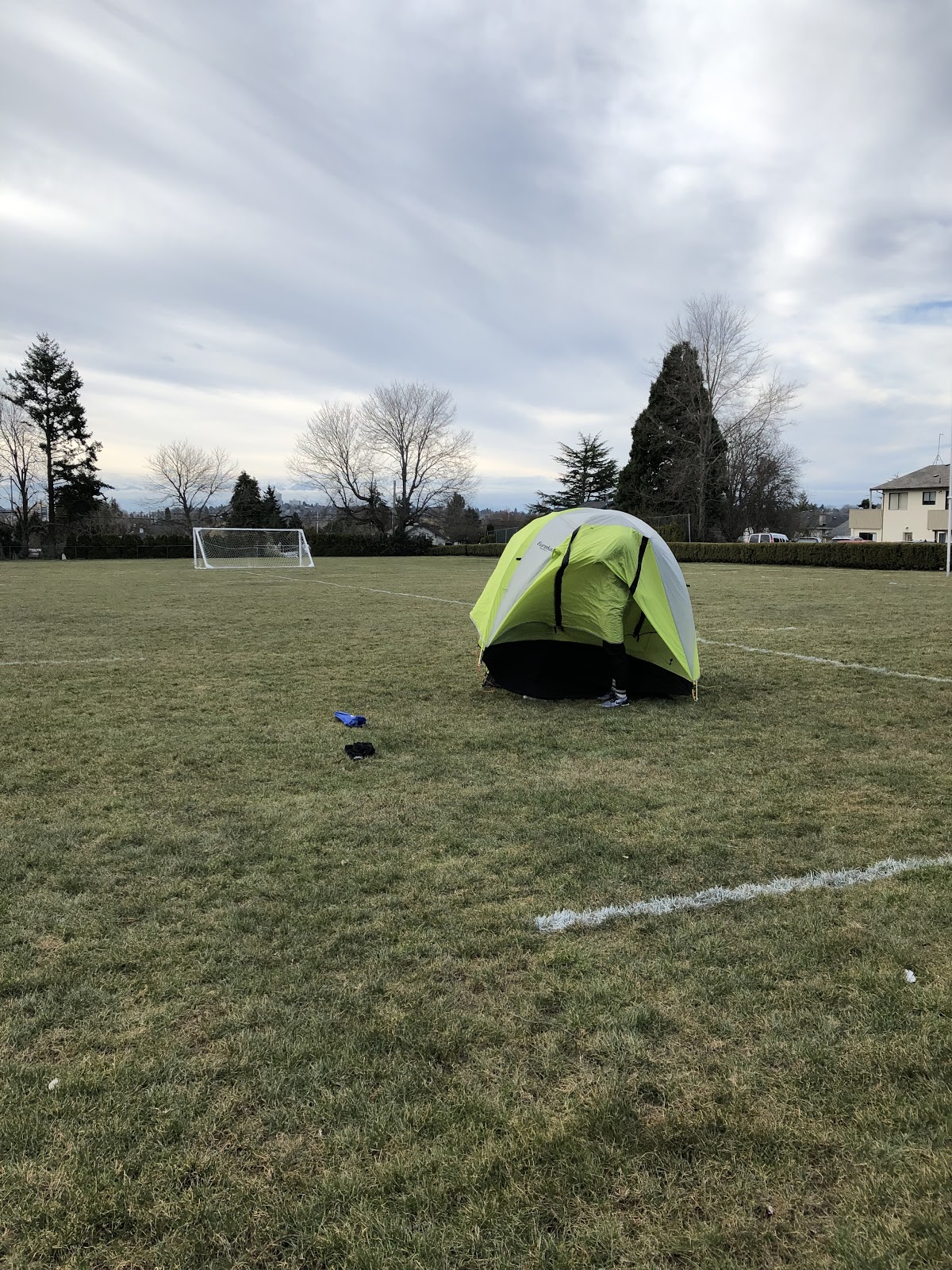
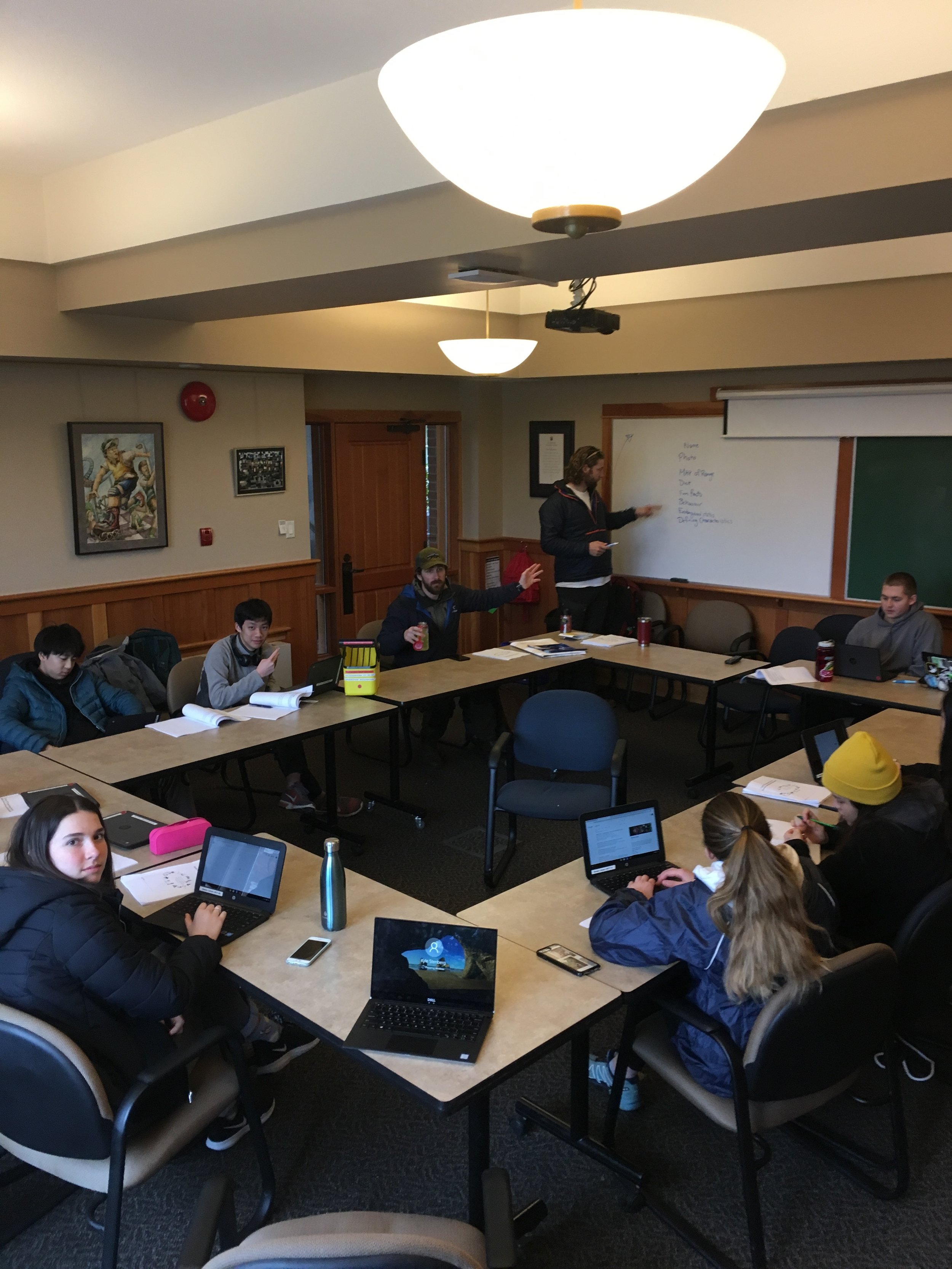
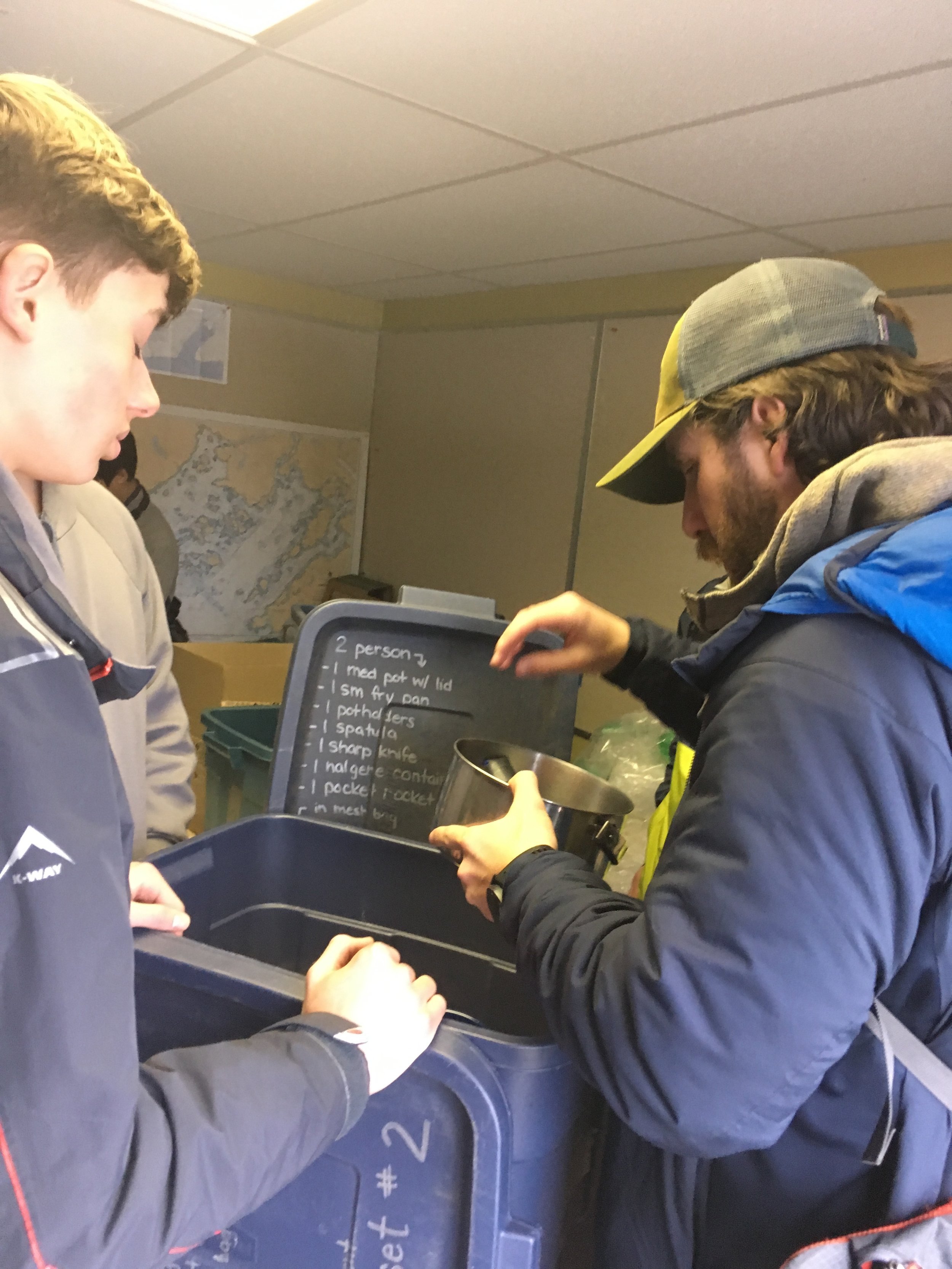
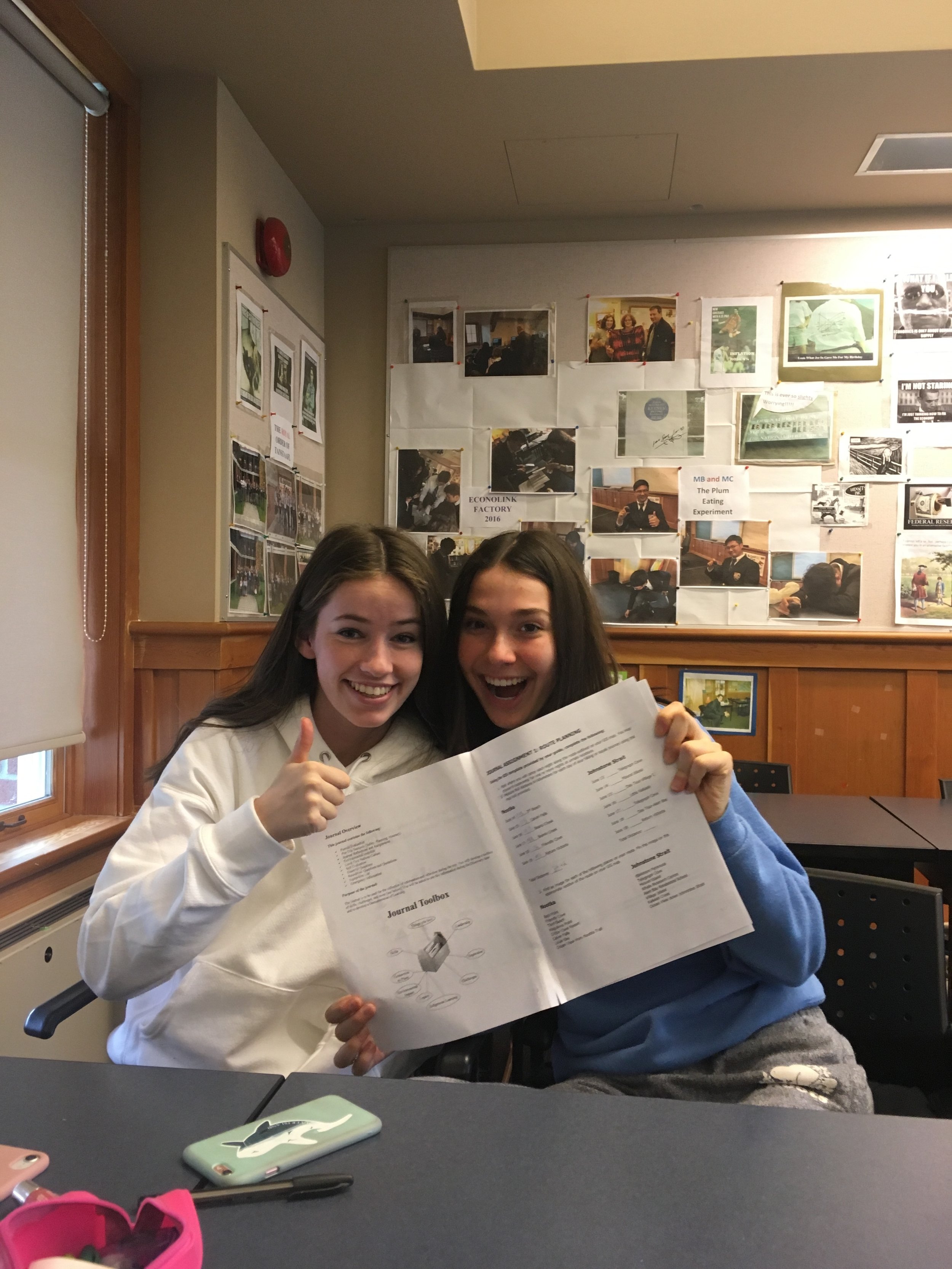
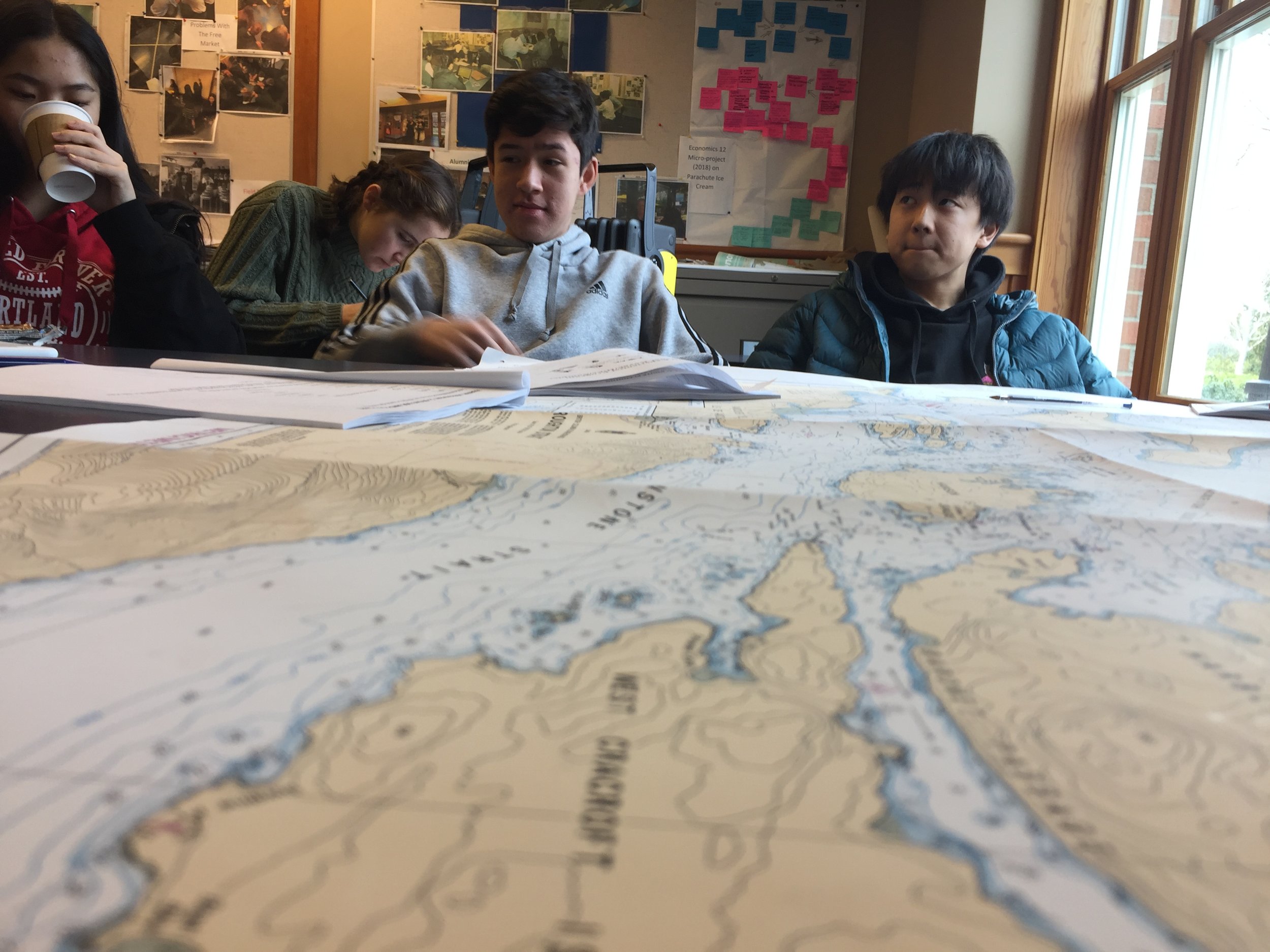
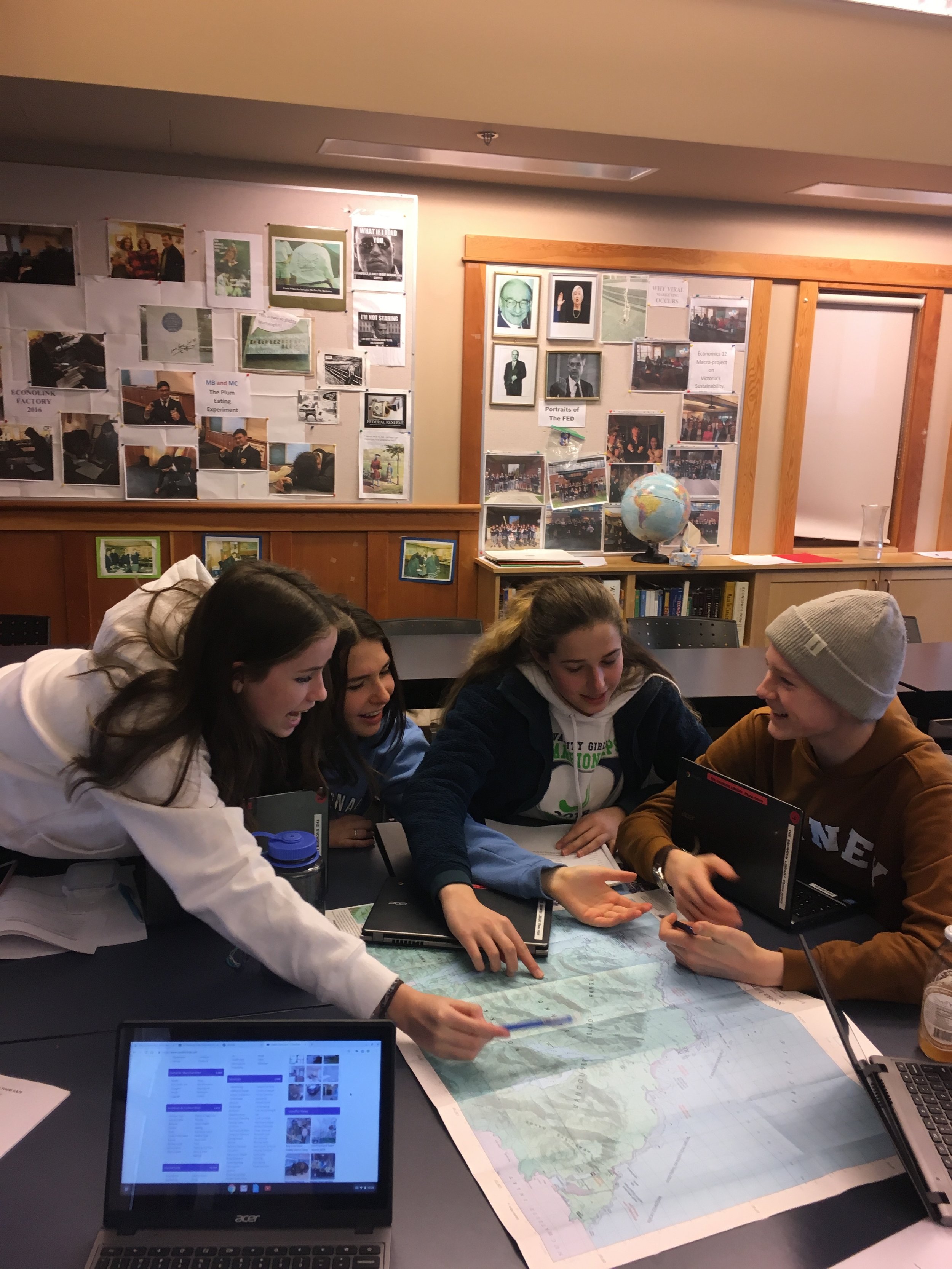
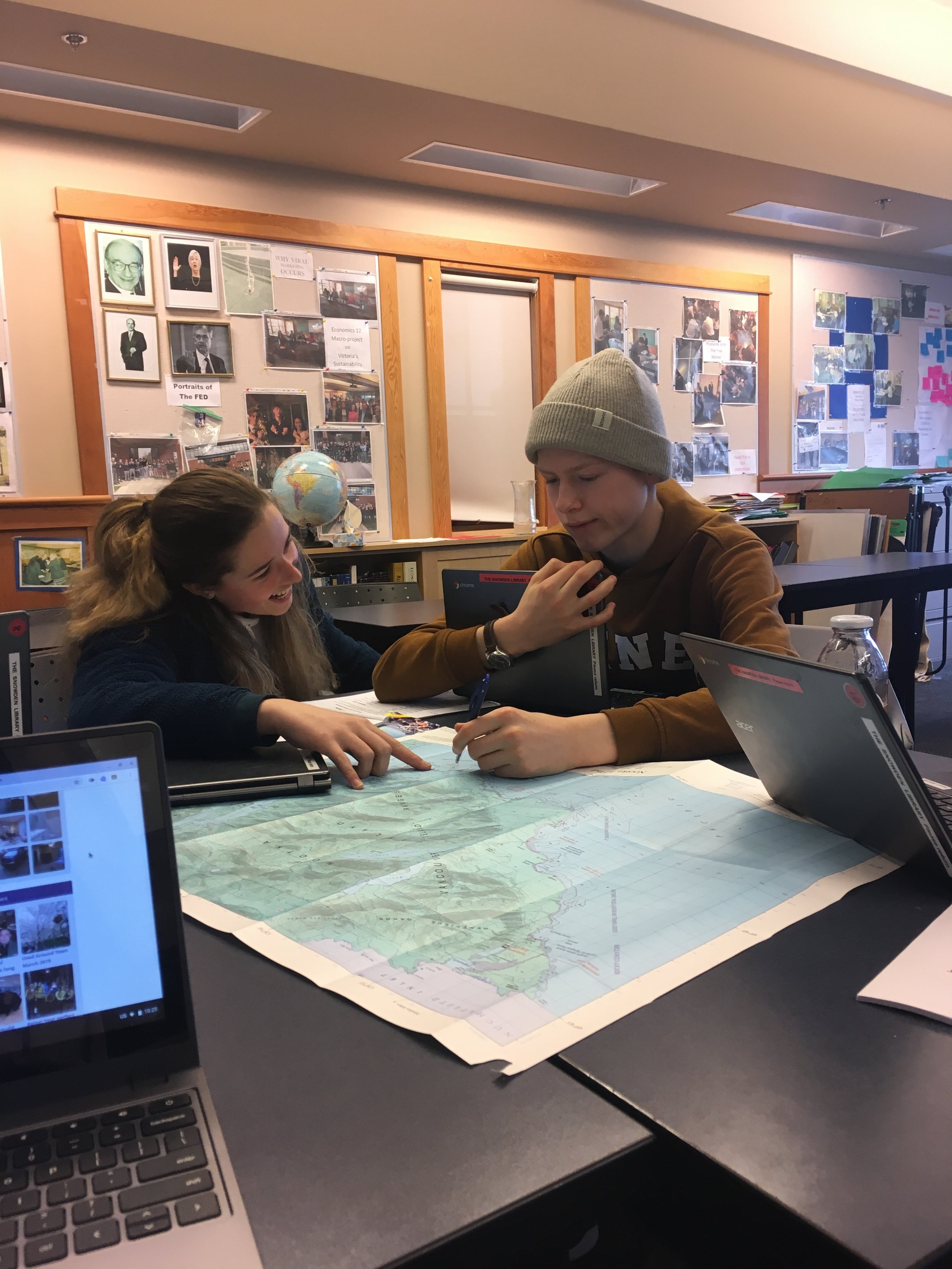
From Kyle S.
For our 4th expedition day, our hiking cohort was combined with the paddling cohort. The day started out in a classroom where we planned out our trips with the help of our guides. We used a mapping website where we placed markers to figure out how far it was from site to site and how much we had to hike each day to finish the whole trail in 4 days, and it came down to about 10 kilometers per day. We also talked about animals we might encounter such as cougars, bears, and wolves, and what to do if we came across one. Lastly, we talked about risk management and the problems we may face hiking, like cliffs, tides, and weather. We were split up from the paddling group, as they had a different route.
At first I was nervous and unsure of what to expect on the hike, but the guides helped us get an idea of what it would be like through the conversations we had. After a short break, we stopped by the outdoor education office and the guides showed us the tools we’d use to cook our meals during the hike and how to use them. We took those with us, along with some macaroni and cheese, and walked up Mt. Tolmie. We split into smaller groups of three and distributed the boxes of mac and cheese between our small groups. I got the fuel and cooking element out (which was called a pocket rocket) and my group got the pot ready with the mac and cheese, and we began making lunch. The guides told us that this is similar to the food we would be eating on the hike, so it was really nice to get some experience with this. Each group then fried up a sausage to eat with the mac and cheese so lunch was surprisingly enjoyable!
Everyone then packed up and we made our way back to SMUS. After a short lunch break, we met back up in the boardroom beside the lecture theatre and each got a chromebook. The guides assigned each person to a category (plants, birds, sea creatures, mammals) to do research on. The instructions were to pick three common organisms that we might see on our trips and research their habitat, behaviour, diet, etc. My category was birds, and I did research on the bald eagle, barn owl, and hummingbird. This took up the remainder of the afternoon. The guides told us that they were going to print out and laminate each one to take with us on our trip so if we run into one of them, we will know a bit about it. With that, our 4th expedition day came to an end.
The focus of the day was mainly to give us an idea of what our trip will be like, from the distance to the animals we may encounter. I think I speak for everyone when I say that we all feel more comfortable about our trips now that we know what to expect, and we are all looking forward to our final expedition day leading up to the June Pursuit Trip!
From Logan H.
Our day started inside, as we pored over maps and charts alongside the hiking cohort, learning how to read them and measure distance. Shortly after, we booted up some computers to load up ArcGIS, a mapping software that we used to plot out the distances we would travel each day, as well as noting some interesting sights that we could encounter on our journey.
After working with maps for a while, we headed up to Mount Tolmie to practice our culinary skills by making some artisanal (boxed) pasta, fine fried cheese, with a delicious side of homemade brownies (bear paws). Being equipped with a gas canister, a pocket rocket cook stove and some camping pots let us get a taste of the experience we will get on trip. After we finished cooking our mac and cheese and frying our sausages, our leaders brought out some bear paws for dessert. Now bear paws, being a sugary treat in high demand, were sought after by many members of our group. A small brawl ensued, with many fighting to claim the final bear paw.
We then returned to the school, to learn more about the animals we might see on our trip. We split up into a couple of groups, choosing either flora, avian or aquatic animals. I chose to research into some of our feathered friends, and found a couple fun facts. For example, did you know that the rhinoceros auklet can hold its breath for 150 seconds? Or that the fork-tailed storm petrel ejects its stomach oils to defend itself? How about the peregrine falcon, which predates on approximately one fifth of the worlds birds? We learned lots of fun facts about lots of the cool animals we see in our beautiful home.
With that, our day was concluded. Whilst this day was considerably more low key than the other days we’ve done, it nevertheless provided valuable experience and knowledge for all of us to use when we leave for our out trips at the end of the year.